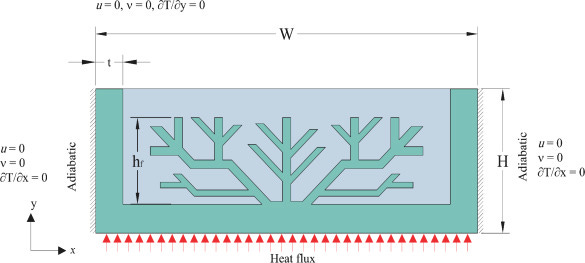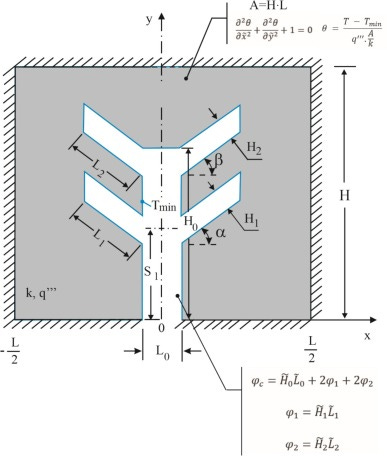Dear all,
The Constructal Newsletter is expanding rapidly, reaching 410 members—and counting! Similarly, the Constructal YouTube Channel has grown to 930 members.
From now on, in addition to YouTube videos, I will be sharing some insightful papers and news with you. Please stay tuned for some interesting content on Constructal Law and its applications. I hope you find it inspiring!
Let’s keep building and sharing knowledge! 🚀✨
---
Umit Gunes, Ph.D.
umitgunes.com
A phase change material-based constructal design finned heat sink: An evolutionary design for thermal management
by Adeel Arshad

This study explores the application of constructal law in designing tree-shaped heat sinks with phase change material (PCM) for miniaturized electronics. A novel structural fin design with varying volume fractions (0%, 10%, 20%) and fin heights (0–20 mm) is analyzed under constant heat input using RT-35HC PCM. Results show that fin height and the number of branches primarily influence heat transfer efficiency. At a 20% volume fraction, the extended surface structure lowers the heat sink temperature by ~8% and increases operational time by over 1%. Higher fins (up to 20 mm) delay reaching the critical temperature, while Nusselt number analysis highlights dominant natural convection during melting. The study concludes that a fin height of 20 mm and a 10% PCM volume fraction provide optimal passive cooling performance for miniaturized electronics.
Geometrical optimization of an isothermal double Y-shaped cavity employing differential evolution algorithm with a constructal approach
by Gill Velleda Gonzales, Cesare Biserni, Luiz Alberto Oliveira Rocha, Emanuel da Silva Diaz Estrada, Liércio André Isoldi, Antônio José da Silva Neto, Elizaldo Domingues dos Santos a

This study applies constructal design (CD) to optimize a complex isothermal double-Y-cavity for cooling a heat-generating rectangular solid. The goal is to minimize maximum temperature excess while considering four constraints and seven degrees of freedom (DOF), offering greater flexibility than previous cavity designs. Optimization is conducted using exhaustive search (ES) and differential evolution (DE) from the fourth DOF onward. For square solids, optimal designs emerge when cavity branches stretch across the solid, distributing heat more evenly, aligning with the optimal distribution of imperfections principle. Performance analysis shows that the double-Y cavity outperforms I-, T-, Y-, X-, double-T-, and H-cavities by 25% to 82% but is 1% less effective than the ψ configuration. The cavity transitions to double-T or I configurations for different height/length (H/L) ratios, demonstrating how constraints influence optimal cooling design.




I'm very excited to see the new papers too! I don't understand most of them, but still happy to learn tidbits from them.